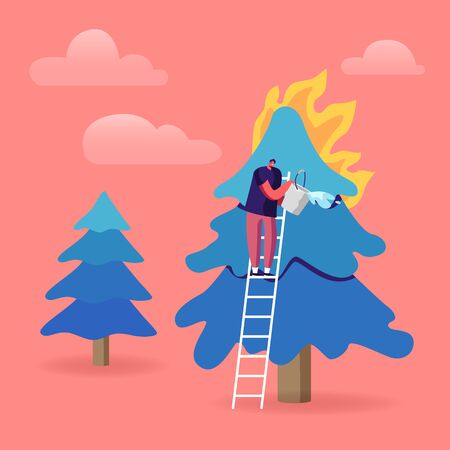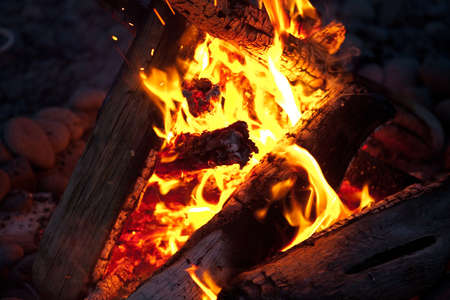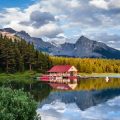Campfire Traditions and Their Role in Outdoor Culture
Few images capture the spirit of American outdoor life better than a group gathered around a crackling campfire. For generations, campfires have served as both a practical resource and a cultural icon in settings ranging from family camping trips to scout jamborees and explorations on public lands. The tradition runs deep: campfires are where stories are told, lessons are learned, and connections to nature—and each other—are forged. In American scouting, the ritual of building and maintaining a fire is considered a rite of passage, teaching responsibility, teamwork, and respect for the environment. On national forests and parks, campfires mark the end of a long hike or day’s adventure, creating space for reflection while highlighting our role as stewards of the wild. Yet this longstanding practice comes with an evolving awareness about ethical wildlife interaction and wildfire prevention, making it essential to balance tradition with responsibility in every flame we ignite.
Wildlife Behavior Around Campfires
Understanding how campfires affect wildlife behavior is key for anyone aiming to practice ethical outdoor skills and minimize negative impacts on local ecosystems. When you light a campfire, you’re not just creating warmth or ambiance—you’re sending signals into the wild that can attract, deter, or alter animal activity patterns around your campsite.
Deterrent Effects of Campfires
Many species, especially large mammals like deer, coyotes, and bears, are naturally wary of fire and human presence. The light, heat, and smoke from a campfire can act as a natural barrier, keeping some animals at bay during nighttime hours when they might otherwise roam closer to your camp. This can reduce the risk of unwanted encounters with potentially dangerous wildlife. However, relying solely on fire for protection is never recommended; always follow best practices for storing food and waste.
Attraction to Food Smells
While the fire itself may repel some creatures, the smells coming from your cooking pot often do the opposite. Scent trails from grilling burgers or roasting marshmallows can travel far and wide, enticing raccoons, foxes, skunks, and even bears to investigate. Understanding which animals are most likely to be attracted by specific scents can help campers plan better food storage strategies:
| Animal | Sensitivity to Food Smells | Common Attraction Sources |
|---|---|---|
| Bears | Extremely high | All food, scented trash, toiletries |
| Raccoons/Skunks | High | Leftovers, sweet snacks, wrappers |
| Coyotes/Foxes | Moderate | Meat scraps, cooked foods |
| Deer/Rabbits | Low-Moderate | Vegetable matter, fruits |
Minimizing Unwanted Animal Encounters
If you want to enjoy the benefits of a campfire while minimizing risks to both yourself and local wildlife, preparation is everything. Clean up all cooking areas immediately after use—don’t leave utensils or leftovers near the fire pit. Store food in bear-proof containers or hang it well away from your sleeping area if regulations require. Finally, avoid burning trash or food scraps in your fire; this not only increases attraction but also pollutes the environment.

3. Ethical Practices for Wildlife Interaction
When it comes to campfires, responsible outdoor enthusiasts know that every flame has an impact beyond just the warmth and light it provides. Practicing ethical wildlife interaction starts with understanding how our actions around the campfire affect local habitats and the creatures living there. By following principles like Leave No Trace and minimizing our campfire’s footprint, we help ensure the wild remains wild for generations to come.
Leave No Trace Principles
The Leave No Trace (LNT) philosophy is at the heart of ethical camping in America’s outdoors. When building a fire, always use established fire rings or fire pans if available—never create new scars on the landscape. This reduces habitat disruption and keeps nesting sites and animal trails undisturbed. Pack out all trash, leftover food, and even small bits like burnt foil or bottle caps that could harm curious wildlife.
Minimizing Campfire Impact
Choose your fire site carefully. Avoid setting up campfires close to water sources or dense undergrowth, as these are often vital habitats for amphibians, birds, and small mammals. Use only dead and downed wood rather than breaking branches from living trees, which provide shelter and food for many species. Keep your fire small—a modest blaze not only conserves fuel but also limits smoke and heat that can drive animals away from their territory.
Respecting Wildlife Boundaries
Wildlife should never be attracted to human food or trash left by a campfire. Secure all edibles in bear-proof containers or hang them well away from your site. Never attempt to approach or feed animals that appear near your campfire; maintaining a respectful distance helps prevent unhealthy habituation and keeps both you and the wildlife safe. Remember: the goal is to leave no trace—not just in ashes, but in animal behavior as well.
4. Understanding Fire Risks and Regional Regulations
Building a campfire is more than just finding a spot and striking a match. In the U.S., wildfires are a real threat, especially in dry regions or during peak fire season. Understanding local fire restrictions and seasonal risks is not just smart—its essential for protecting both people and wildlife. Every region has its own set of rules based on climate, recent weather events, and historical fire patterns. Ignoring these can lead to devastating consequences, from massive wildfires to legal penalties.
Why You Need to Know the Rules
National parks, state forests, and public lands all have different regulations when it comes to campfires. Some areas might allow fires only in established rings, while others ban them entirely during high-risk months. The reason is simple: one careless ember can destroy thousands of acres of habitat, putting animals and visitors at risk.
Common Campfire Restrictions by Region
| Region | Typical Restrictions | Fire Season |
|---|---|---|
| California | No ground fires; use designated pits only; frequent burn bans | May–October (varies by year) |
| Rocky Mountains | Fires allowed in metal rings; sometimes full bans during droughts | June–September |
| Southeast U.S. | Permits required; frequent rain but sudden dry spells raise risk | March–June, October–December |
| Pacific Northwest | Fires allowed outside of high-risk periods; strict enforcement during dry spells | July–September |
The Bottom Line: Always Check First!
No matter where you set up camp, checking with local rangers or park websites before starting a fire is a must. Not only does this keep you within the law, but it also ensures youre not endangering local wildlife or their habitats. Responsible campfire use means respecting these guidelines every single time.
5. Preventing Wildfires: Practical Campfire Safety Tips
Campfires are a classic part of American outdoor culture, but with this tradition comes a serious responsibility to prevent wildfires. Every year, countless acres of wilderness are lost due to careless fire use. Here’s how you can enjoy your campfire ethically while keeping the wild safe:
Choose the Right Spot
Always use designated fire rings or pits when available. If you must build your own, pick a spot at least 15 feet away from tents, trees, shrubs, and overhanging branches. Clear away all leaves, pine needles, and flammable debris in a 10-foot diameter around your fire site.
Proper Fire Setup
Keep your campfire small—no larger than necessary for cooking or warmth. Use only local wood or sticks on the ground; never break branches off living trees. Stack your wood so it won’t roll out of the ring, and avoid using accelerants like lighter fluid or gasoline.
Stay Attentive and Prepared
Never leave your campfire unattended—not even for a quick hike or nap. Always keep a bucket of water, a shovel, and dirt or sand nearby to control unexpected flare-ups. Assign someone in your group as the designated fire watcher if you’re multitasking.
Extinguishing Your Fire Completely
When you’re ready to put out your fire, pour water on the flames until hissing stops. Stir the ashes and embers with a stick or shovel, then add more water and repeat until everything is cool to the touch. Don’t bury the fire—embers can smolder underground and reignite later.
Leave No Trace: Site Cleanup
Once extinguished, scatter any remaining cool ashes widely or pack them out if regulations require. Restore the fire site to its natural appearance by removing evidence of your campfire. This not only prevents future accidents but also preserves the wild experience for others.
By following these actionable campfire safety strategies, you protect wildlife habitats, reduce human impact on nature, and uphold America’s outdoor legacy for generations to come.
6. Education and Community Engagement
When it comes to ethical wildlife interaction and fire prevention in America’s great outdoors, education and community engagement are absolute game-changers. Whether you’re a seasoned backpacker or just heading out for your first campout, understanding the “why” behind the rules makes all the difference. Outdoor skills classes, ranger-led talks, and community events like National Public Lands Day give folks hands-on learning about responsible campfire use—like building fires only in designated rings, keeping them small, and making sure they’re dead out before moving on. These programs don’t just teach technique; they foster respect for wild places and the animals that call them home.
The Power of Group Responsibility
Group outings, scout troops, and hiking clubs all have a responsibility to set the standard for ethical behavior. Peer-to-peer learning is huge: when one camper models packing out trash or never feeding wildlife, others follow suit. By holding each other accountable, outdoor communities can prevent careless mistakes that lead to wildfires or harm local critters.
Community Outreach Initiatives
Across the U.S., organizations like Leave No Trace Center for Outdoor Ethics partner with schools, parks, and businesses to spread the word about fire-safe camping and wildlife stewardship. Social media campaigns and volunteer trail crews help keep these messages front-and-center for everyone who enjoys America’s wild spaces.
Leaving a Legacy
Ultimately, education and community outreach empower everyone—from families roasting marshmallows to backcountry explorers—to be stewards of both safety and wildlife. When we share knowledge, lead by example, and look out for our fellow adventurers, we ensure that future generations can experience the beauty of wild America without unnecessary risk or damage.


